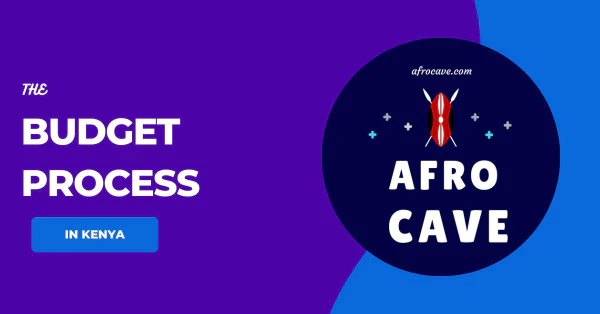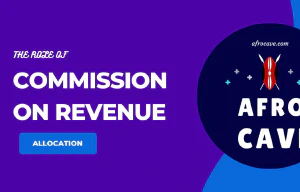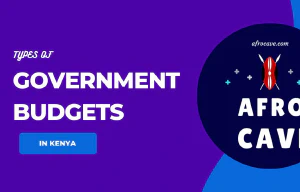The Budget Process in Kenya
- Author Gĩthĩnji
- Updated on:

The budget process in Kenya is important for government planning and decision-making.
The budget-making process in Kenya begins from August of the current financial year. The process ends in December of the coming financial year.
A financial year is the period that governments use for accounting and budgeting. A financial year also entails financial reporting.
A financial year is also known as a fiscal year, or sometimes a budget year.
A complete financial year in Kenya begins on 1st July of the current calendar year. It ends on 30th June of the coming year.
A financial quarter in the financial year in Kenya comprises three months. Thus, there is the:
- First Quarter that begins from 1st July to 30th September;
- Second Quarter that begins from 1st October to 31st December;
- Third Quarter that begins on 1st January to 31st March; and
- Fourth Quarter that begins from 1st April to 30th June.
The budget process in Kenya allows for public participation at different stages. The budget process happens at the national level and the county level.
The purpose of a budget is to plan, organise, track, and improve the financial situation (e.g. of a government). The Government utilises the budget to divide resources for its functions.
The budget planning process in Kenya aligns public needs and government policy.
Different legislation and regulations prescribe the budget planning process in Kenya. They include the–
- Constitution;
- Public Finance Management Act;
- Public Finance Management Regulations;
- County Governments Act.
Budget oversight by Parliament and the County Assemblies occurs throughout the budget cycle.
See the second part of this article, the budget documents in Kenya.
Table of ContentsShow/Hide
Stages of the budget process in Kenya
The four major stages of the budget process in Kenya are as follows:
Formulation
The formulation stage falls under the Executive arm of government. Both the national and county level handle the formulation stage.
Some of the processes that shall take place at the formulation stage include–
- integrated development planning process which shall include both long-term and medium-term planning;
- planning and determining financial and economic policies and priorities over the medium term;
- preparing overall estimates in the form of:
- Budget Policy Statement of national government revenues and expenditures, and
- estimates in the form of the County Fiscal Strategy Paper for the county governments;
- preparing the budget estimates.
The public shall take part in the formulation stage through public participation.
The budget documents below belong in the formulation stage at the national level–
- the Budget Circular,
- the ‘outlook’ section of the Budget Review and Outlook Paper (BROP),
- the Budget Policy Statement, and
- the Budget Estimates.
The budget documents below belong in the formulation stage at the county level–
- the Budget Circular,
- the Annual Development Plan (ADP),
- the outlook section of the County Budget Review and Outlook Paper (CBROP),
- the County Fiscal Strategy Paper (CFSP), and
- the Budget Estimates.
Approval
The approval stage falls under Parliament and the County Assemblies. Parliament handles the approval at the national level. The County Assemblies handle the approval stage at the county level.
- As a basis for future deliberations,
- Parliament adopts the Budget Policy Statement; and
- Each County Assembly adopts their respective the County Fiscal Strategy Paper.
- Amending and approving the budget estimates after–
- the National Executive tables them before Parliament; or
- the County Executive tables them before the County Assembly.
- Enacting the–
- Appropriation Bill, and
- any other Bills required to carry out the budgetary proposals.
The budget documents below belong in the approval stage at both levels of government–
- The Appropriation Bills (also known as the Approved Budgets), and
- the Finance Acts.
Implementation
The implementation stage involves executing the budget proposals passed at the approval stage.
The Executive at the national and the county level is in charge of the implementation stage.
(Parliamentary) Oversight also takes place at this stage. It involves:
- evaluating and accounting for the budgeted revenues and expenditures for–
- the national government, and
- the county governments.
- reviewing and reporting on those budgeted revenues and expenditures every three months.
The budget documents that belong to this stage are–
- the quarterly budget implementation review reports by the Controller of Budget.
- the quarterly budget implementation reports by the national and county governments.
The national government budget implementation reports are on the National Treasury’s website.
The county governments budget implementation reports shall be on their websites. Yet, counties are notorious for not uploading these quarterly reports.
Audit and Evaluation
This is usually the last stage of the budget process and it follows the implementation stage.
The Office of the Auditor-General is in charge of audit. It audits and reports on the financial accounts of–
- the national government, and
- the county governments.
The audit reports shall confirm whether the expenditure of public funds was prudent.
The Auditor-General shall table the reports before Parliament or the relevant county assembly. Parliament or the County Assemblies shall debate and consider the reports. They shall thereafter take appropriate action.
The debate and consideration shall occur within three months of tabling the reports.
The Office of the Controller of Budget is in charge of evaluation. It reviews the budget expenditure for the previous fiscal year for–
- the national government, and
- the county governments
The documents that belong in this stage are:
- the Auditor General’s reports for both levels of government; and
- the ‘review’ section of the Budget Review and Outlook Paper (BROP and CBROP). The review section forms the basis for evaluation.
The Controller of Budget shall table the quarterly budget implementation reports to–
- Parliament (National Assembly and Senate), and
- the County Assemblies.
Summary of the stages of the budget process in Kenya
Section 35 of the Public Finance Management Act guides the national budget process. The budget process for the national government shall follow these stages–
- integrated development planning process which shall include both long term and medium-term planning;
- planning and determining financial and economic policies and priorities at the national level over the medium term;
- preparing overall estimates in the form of the Budget Policy Statement of national government revenues and expenditures;
- adoption of Budget Policy Statement by Parliament as a basis for future deliberations;
- preparing budget estimates for the national government;
- submitting those estimates to the National Assembly for approval;
- enacting the Appropriation Bill and any other Bills required to implement the National government’s budgetary proposals;
- implementing the approved budget;
- evaluating and accounting for, the national government’s budgeted revenues and expenditures; and
- reviewing and reporting on those budgeted revenues and expenditures every three months.
The Cabinet Secretary for finance shall ensure public participation in the budget process.
Section 125 of the Public Finance Management Act guides the county budget process. The budget process for the county governments shall follow these stages–
- integrated development planning process which shall include both long term and medium-term planning;
- planning and establishing financial and economic priorities for the county over the medium term;
- making an overall estimation of the county government’s revenues and expenditures;
- adoption of County Fiscal Strategy Paper;
- preparing budget estimates for the county government and submitting estimates to the county assembly;
- approving of the estimates by the county assembly;
- enacting an appropriation law and any other laws required to implement the county government’s budget;
- implementing the county government’s budget; and
- accounting for, and evaluating, the county government’s budgeted revenues and expenditures.
The key dates for the budget process in Kenya
Some activities take place between these key dates that are not mentioned. For example, the meetings by the Executive to discuss and approve certain documents. Regardless, here are the key dates in the budget process in Kenya.
1st Quarter (1st July to 30th September)
August 30: This date marks the beginning of the budget process in Kenya. The National Treasury and the County Treasury issue circulars to their respective departments. The circulars contain:
- the guidelines for the budget process for the coming financial year; and
- the procedures to follow to involve the public in the budget process.
The National and County Treasuries shall also publicise the circulars. (The circulars usually contain the budget calendar with the key dates).
September 1: On this day, the County Planning Departments shall table the Annual Development Plans (ADPs) in their respective Assemblies. They shall then make the ADPs public within seven days after tabling them before the Assembly. There is no specific date by which the County Assembly shall approve the ADPs. The national government does not produce an Annual Development Plan because it relies on long term plans such as the Vision 2030.
September 1 to February 15: The National Treasury and the County Treasuries shall conduct sector hearings during this period. The sector hearings allow the public and other stakeholders to give their views at the sectoral level (e.g. security, health, agriculture, education, etc.). These views are necessary to enable the:
- National Treasury to prepare National Budget Policy Statement; and
- County Treasuries to prepare the County Fiscal Strategy Paper.
September 30: The National Treasury and the County Treasuries shall produce their respective Budget Review and Outlook Papers by this date.
2nd Quarter (1st October-31st December)
October 21: By this date, the National Treasury shall table the national Budget Review and Outlook Paper (BROP) before the National Assembly. The County Treasuries shall also table the County Budget Review and Outlook Paper before their respective County Assemblies. This allows the National Assembly and the County Assembly to discuss the document.
October 31: The deadline for County governments to publish their first-quarter budget implementation reports. They shall then make the reports public, usually through their respective websites.
October 31: This is the deadline for the Controller of Budget (CoB) to release the first quarter budget implementation reports. The reports are for the national government and the county governments respectively. The Controller of Budget shall then table these reports before the Senate and the National Assembly and then publicise them, usually through their website.
November 15: The National Government shall publish its first-quarter budget implementation report by this date. It shall then table the report before the National Assembly. Thereafter, it shall make the report public, usually through the Treasury website.
December 31: The Auditor General shall release the audit reports by this date. These reports are for both the national and the county governments for the previous financial year ending on 31st June.
3rd Quarter (1st January-30th March)
January 1: The Commission for Revenue Allocation (CRA) shall submit its recommendations on the vertical sharing of national revenue to the National Treasury by this date. Vertical sharing is the division of the ordinary tax revenue that the national government raises nationally between the national and the county governments.
January 31: County governments shall publish and publicize their 2nd quarter budget implementation reports by this date. The reports cover the period from 1st October to 31st December of the current financial year.
January 31: The deadline for the Controller of Budget to release the second quarter budget implementation reports. The reports are for both the national and the county governments. The Office shall table the reports before Parliament and then make them public.
February 15: The national government shall publish its 2nd quarter budget implementation report. It shall table the report before the National Assembly and then make it public.
February 15: The National Treasury shall submit four crucial documents to parliament on this date. These are the:
- National Budget Policy Statement (BPS);
- medium-term Debt Management Strategy paper;
- The Division of Revenue Bill (DoRB); and
- the County Allocation of Revenue Bill (CARB).
February 28: Parliament shall approve the Budget Policy Statement (BPS) by this date.
February 28: The County Treasuries shall table their respective County Fiscal Strategy Paper (CFSP) before the County Assemblies by this date.
February 28: The Cabinet Secretary for Finance shall submit the statement on the Debt Management Strategy to the Commission on Revenue Allocation and the Intergovernmental Budget and Economic Council, then publish and publicise the statement.
March 1: This is the deadline for the National Treasury to publish and publicize the Budget Policy Statement after tabling it before parliament.
March 7: The deadline for the County Treasuries to publish and publicize their Fiscal Strategy Paper after tabling them before the County Assembly.
March 14: The County Assemblies shall approve their respective County Fiscal Strategy Paper by this date.
March 15: This is the deadline for Parliament to consider the Division of Revenue and County Allocation of Revenue Bills and approve them with or without amendments.
4th Quarter (1st April to 30th June)
April 30: Deadline for the Counties to publish their third-quarter budget implementation reports.
April 30: Deadline for the Controller of Budget to publish and publicize the 3rd quarter budget implementation reports. The reports are for both the national and the county governments.
April 30: The National Treasury shall submit the national budget proposal (or budget estimates) before Parliament (the National Treasury prepares the national budget estimates in Kenya). The Judiciary and the Parliamentary Service Commission shall also submit their independent budgets before parliament.
April 30: The deadline for the Cabinet Secretary for finance to submit the Finance Bill before the National Assembly outlining the revenue-raising measures for the national government.
April 30: Each County Treasury shall submit the county budget proposal (or budget estimates) to the County Assembly on this date (the County Treasury prepares the county budget estimates). Each County Assembly clerk shall prepare, and submit to the County Assembly, the budget estimates for the County Assembly. The clerk shall also submit a copy of the estimates to the County Executive Committee Member for Finance.
May 1 to June 30: Some of the activities that take place during this period have no specific timelines or deadlines.
- The Budget Committees for both the National and the County governments will begin to conduct public hearings on the budget proposals or estimates.
- The Cabinet Secretary for Finance and the County Executive Member for Finance shall publicize the national and county budget estimates ‘as soon as practicable’ after they table them before the national and county assembly respectively.
- The national assembly and the county assembly shall consider the national and the county government budget estimates respectively. They shall then approve them, with or without amendments, in time for the Appropriation Bill and any other laws required to implement the budget (except the Finance Bill) and pass them by 30th June each year.
- Not later than twenty-one days after the national and the county assembly have approved the budget estimates, the National and the County Treasury shall consolidate the estimates, publish, and publicize them respectively. (Approved Budget)
- Upon approval of the budget estimates by the National Assembly and the County Assembly, the Cabinet Secretary for Finance and the County Executive Committee Member for Finance shall prepare and submit an Appropriation Bill of the approved estimates to the National Assembly and the County Assembly respectively.
May 15: The national government shall publish its 3rd quarter budget implementation report by this date.
June 30: This is the deadline for Parliament and the County Assembly to pass their Appropriation Bills.
June 30: This is the deadline for the National Assembly to consider and approve the Finance Bill with or without amendments.
June 30: The deadline for the County Executive Member for Finance to submit the County Finance Bill before the County Assembly outlining the revenue-raising measures for the county government.
Other key dates in the budget process
July 31: Deadline for the Controller of Budget to publish and publicize the 4th quarter budget implementation reports. The reports are for both the national and the county governments.
July 31: Deadline for the county governments to publish and publicise their 4th quarter budget implementation reports.
August 15: Deadline for the national government to publish and publicise the fourth quarter budget implementation reports.
September 30: This is the deadline for the County Assemblies to consider and approve their respective Finance Bill with or without amendments.
Before you read further, based on these key dates, can you identify where each of them appears in the four stages of the budget process and what activity takes place during each stage?
The budget process is continuous and overlaps
From June 30th, the budget process for the next year in Kenya begins afresh come August 30. You shall again expect the Auditor General reports by 30th December. These reports mark the end of the budget process in Kenya from the previous year. Despite that, we shall begin a new budget cycle in August going forward.
What this means is that two budget processes for different financial years are at one time running concurrently. After all, the budget cycle takes 28 months from the day formulation starts to when the audit shall end, that is:
- August 30 of the current year to June 30 of the coming year for formulation and approval stage (10 months).
- 1st July of the coming year to 30th June of the year after (the coming year) for the implementation stage (12 months).
- 1st July of the year after (the coming year) to 30th December of the same year for the audit and evaluation stage (6 months).
While the budget process is defined in terms of key dates and deadlines, they are not always followed by either both levels of government or their ministries, departments and agencies. Therefore, it is important to always be alert to any delays so you don’t miss out on the budget process altogether.
Mostly, the national government and the county governments advertise budget hearings (or forums) in the newspapers, their websites and also on their social media accounts. Therefore, it is important to choose either of these fora to be alerted when the budget hearings are announced.
One of the issues that may delay or accelerate the budget process is the general elections year. For example, the National Treasury set the accelerated budget calendar for the financial year 2022/2023 to begin in July 2021 and to end in April 2022.
Other issues include delays in tabling documents to parliament or the county assembly by the national or county executive respectively, or the national and county legislatures delaying in approving certain documents beyond the deadline.
More so, the Auditor General may not receive the financial statements from the national government, county governments and their ministries, departments and agencies in time which may delay the audit process. The same applies to the Controller of Budget when it comes to reporting on the quarterly budget expenditure.
(This information comes from the Public Finance Management Act. Additional information is obtained from various from public documents by IBP Kenya and some by TI Kenya).
- «Previous Limitation of the Right of Access to Information in Kenya
- Next» Circumstances for Denial of the Right to Vote in Kenya


